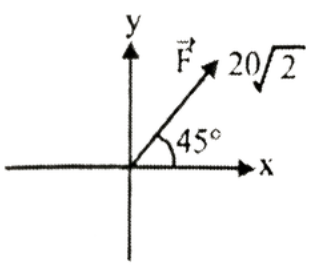Write the different components of a lac - operon in E . Coli Explain its expression while in an 'open' state.
Step-by-Step Solution
Step 1: Identify the Components of the Lac Operon
The lac operon in E. coli consists of the following components:
1. Regulatory Gene (lacI): This gene codes for the repressor protein that inhibits the operon.
2. Promoter (P): The site where RNA polymerase binds to initiate transcription.
3. Operator (O): The segment where the repressor binds to block transcription.
4. Structural Genes (lacZ, lacY, lacA): These genes code for proteins involved in lactose metabolism:
- lacZ: Codes for beta-galactosidase, which breaks down lactose.
- lacY: Codes for permease, which facilitates lactose entry into the cell.
- lacA: Codes for transacetylase, which is involved in lactose metabolism.
Step 2: Explain the Expression of the Lac Operon in the 'Open' State
When the lac operon is in the 'open' state, it means that the operon is activated for transcription. This occurs under the following conditions:
1. Presence of Lactose: When lactose is available, it acts as an inducer.
2. Binding of Lactose to Repressor: Lactose binds to the repressor protein produced by the regulatory gene (lacI). This binding changes the shape of the repressor, preventing it from binding to the operator.
3. Operator is Free: With the repressor no longer bound to the operator, the operator site is free.
4. RNA Polymerase Binding: RNA polymerase can now bind to the promoter region of the operon.
5. Transcription Initiation: RNA polymerase initiates transcription, leading to the production of mRNA from the structural genes (lacZ, lacY, lacA).
6. Translation of Proteins: The mRNA is then translated into the respective proteins (beta-galactosidase, permease, and transacetylase), which are necessary for the metabolism of lactose.
Summary
In summary, the lac operon consists of a regulatory gene, a promoter, an operator, and three structural genes. When lactose is present, it binds to the repressor, allowing RNA polymerase to transcribe the structural genes, leading to the production of proteins that enable the utilization of lactose.
The lac operon in E. coli consists of the following components:
1. Regulatory Gene (lacI): This gene codes for the repressor protein that inhibits the operon.
2. Promoter (P): The site where RNA polymerase binds to initiate transcription.
3. Operator (O): The segment where the repressor binds to block transcription.
4. Structural Genes (lacZ, lacY, lacA): These genes code for proteins involved in lactose metabolism:
- lacZ: Codes for beta-galactosidase, which breaks down lactose.
- lacY: Codes for permease, which facilitates lactose entry into the cell.
- lacA: Codes for transacetylase, which is involved in lactose metabolism.
When the lac operon is in the 'open' state, it means that the operon is activated for transcription. This occurs under the following conditions:
2. Binding of Lactose to Repressor: Lactose binds to the repressor protein produced by the regulatory gene (lacI). This binding changes the shape of the repressor, preventing it from binding to the operator.
3. Operator is Free: With the repressor no longer bound to the operator, the operator site is free.
4. RNA Polymerase Binding: RNA polymerase can now bind to the promoter region of the operon.
5. Transcription Initiation: RNA polymerase initiates transcription, leading to the production of mRNA from the structural genes (lacZ, lacY, lacA).
6. Translation of Proteins: The mRNA is then translated into the respective proteins (beta-galactosidase, permease, and transacetylase), which are necessary for the metabolism of lactose.
In summary, the lac operon consists of a regulatory gene, a promoter, an operator, and three structural genes. When lactose is present, it binds to the repressor, allowing RNA polymerase to transcribe the structural genes, leading to the production of proteins that enable the utilization of lactose.
Topper's Solved these Questions
- XII BOARDSBOOK - XII BOARD PREVIOUS YEAR PAPER ENGLISHCHAPTER - XII BOARDSEXERCISE - DELHI BOARD- SET-III (SECTION-B)
2 Videos
- XII BOARDSBOOK - XII BOARD PREVIOUS YEAR PAPER ENGLISHCHAPTER - XII BOARDSEXERCISE - Section A
23 Videos
- XII BOARDSBOOK - XII BOARD PREVIOUS YEAR PAPER ENGLISHCHAPTER - XII BOARDSEXERCISE - SECTION -C
50 Videos
- SAMPLE PAPER 2019BOOK - XII BOARD PREVIOUS YEAR PAPER ENGLISHCHAPTER - SAMPLE PAPER 2019EXERCISE - Section E Part B
3 Videos
Similar Questions
Name the components of lac operon and discuss their role
View SolutionWhat is an operon ? Explain the functioning of lac operon when in an open state.
View SolutionHow are the structural genes inactivated in lac operon in E. Coli? Explain.
View SolutionHow are the structural genes inactivated in lac operon in E. Coli? Explain.
View Solution
Given above is the schematic representation of lac operon of E.coli. Explain the functioning of this operon when lactose is provided in the growth medium of the bacteria.
View SolutionWrite the vector →F in terms of its component :-

View SolutionWrite the names of different types of muscles. Explain two important properties of muscle.
View SolutionIn E.coli, lac operon is induced by
View SolutionHow are the structural genes activated in the lac operon in E. coli ?
View SolutionDefine the term water potential. What are its components ? Explain.
View Solution
